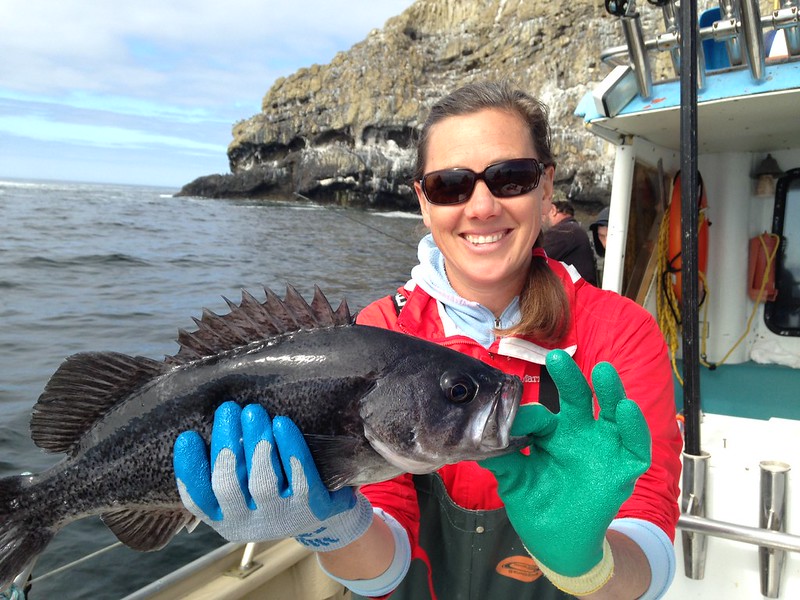
Tiny pieces of discarded plastics have been discovered in the stomachs of some Oregon black rockfish, but there is no indication that these fish are still anything but safe to eat.
The Oregon Department of Fish and Wildlife’s Marine Reserves Program collaborated with researchers at Oregon State University on a project investigating so-called microplastics and microparticles in Oregon black rockfish sampled near marine reserve areas.
Microparticles — contaminants that are smaller than 5 millimeters, including microplastics — are found in oceans and other natural environments. Microplastics are commonly ingested by marine organisms and they can impact the organism’s health and physiological behavior, such as growth rates and swimming ability. These organisms can include fish and shellfish eaten by people. While some research on microplastics has occurred on shellfish populations in Oregon, this is the first study to explore the presence of these contaminants in Oregon’s rockfish.
During hook-and-line monitoring surveys, the ODFW Marine Reserves Program provided samples from subadult black rockfish taken from comparison areas near marine reserves. Collaborative data from the ODFW Marine Reserve & OSU partnership studying juvenile fish was also shared as part of this research, to explore microplastic presence in juvenile black rockfish. These samples, along with samples gathered from recreational charter anglers in Newport, were analyzed to identify the presence of microplastics in the stomach and digestive tracks of these fish.
Findings
The study showed that 93% of subadult and 92% of juvenile rockfish had microplastics in their guts. While this study did not look for microparticles in the fishes’ flesh, ongoing research shows only low levels of microparticles – far less than what humans ingest even from indoor air.
The data also revealed that there were also geographical differences in microplastic levels in sub-adult fish, with those closer to Portland testing at higher levels. The two northern-most areas where fish were sampled (the comparison areas of Cape Falcon Marine Reserve and Cascade Head Marine Reserve) had higher levels of microparticle ingestion in comparison to those caught near Newport, Cape Perpetua or Redfish Rocks near Port Orford. One explanation for this result could be the closer proximity to the Columbia River, since data shows that rivers can concentrate and transport plastics from dense human population centers such as Portland. Prior research has shown the Columbia River is contaminated with microplastics and other particle types.
Subadult black rockfish were sampled near four marine reserves through the hook-and-line surveys.
There was no geographical difference of microparticle ingestion by juvenile black rockfish, based on samples collected from the Otter Rock Marine Reserve and the Cape Foulweather Comparison Area.
This new research suggests that fish located inside the reserves contain a similar amount of microparticles in both juvenile and subadult black rockfish as outside of the reserves, although we only compared juvenile black rockfish inside a comparison area to one marine reserve (Otter Rock). While ODFW subadult fish samples were not caught inside the reserves, the oceanographic processes known to influence comparison areas where samples were taken and reserves are similar, suggesting similar microparticle exposure levels should be expected. This assumes that exposure to microparticles occurs mainly due to oceanographic processes and not from local land-based sources.
This data collection and study is one of many emerging snapshots in the collage of scientific collaborations in which Oregon’s Marine Reserves Program helps create better clarity in the ever-evolving picture of what’s happening in our near-shore waters.
To read the article, published in PeerJ, click here.
